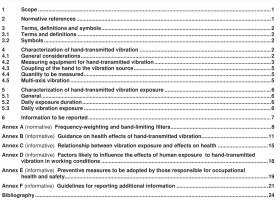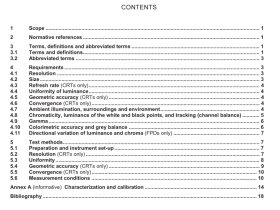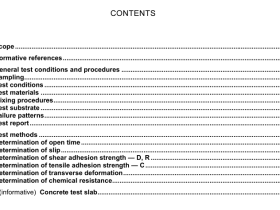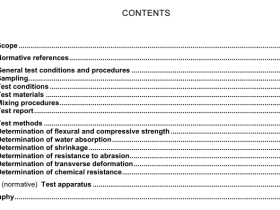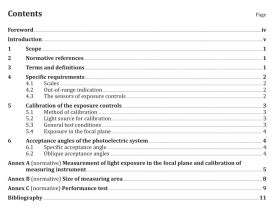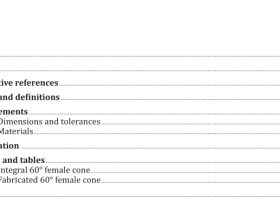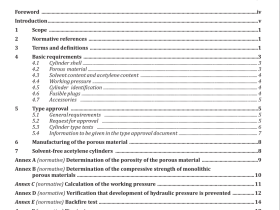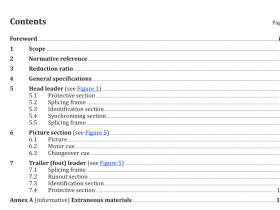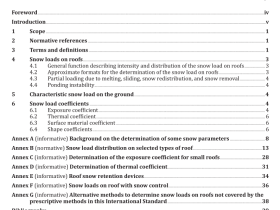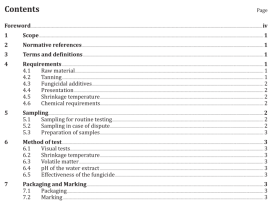BS ISO 19706 pdf download
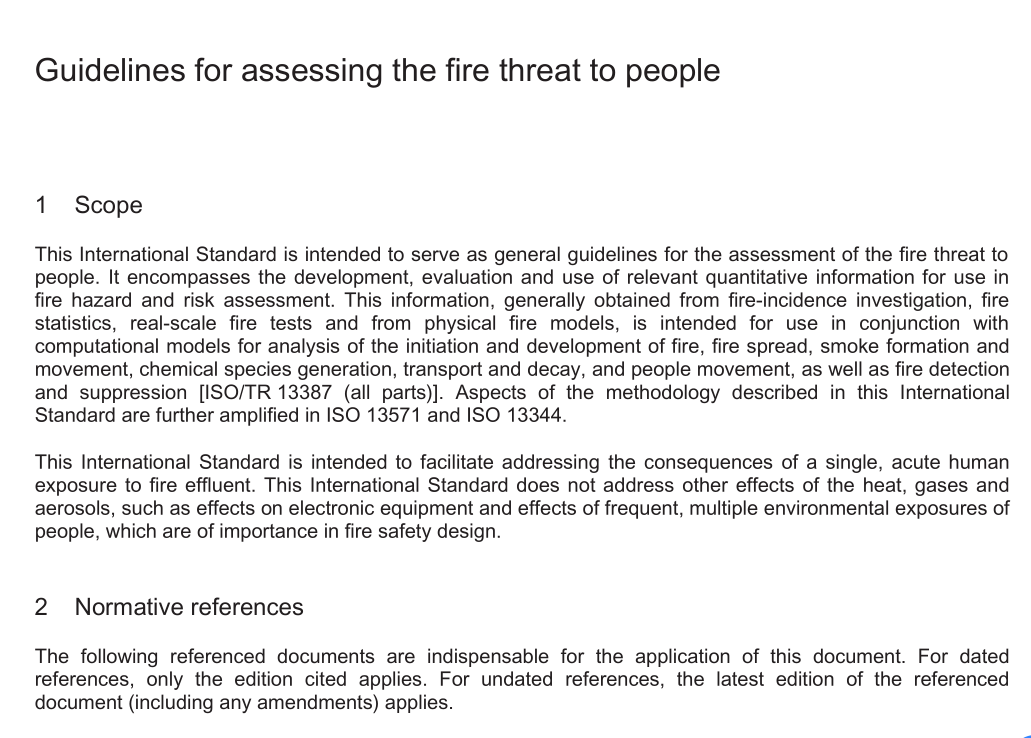
BS ISO 19706 pdf download Guidelines for assessing the fire threat to people
1 Scope
This International Standard is intended to serve as general guidelines for the assessment of the fire threat to people. It encompasses the development, evaluation and use of relevant quantitative information for use in fire hazard and risk assessment. This information, generally obtained from fire-incidence investigation, fire statistics, real-scale fire tests and from physical fire models, is intended for use in conjunction with computational models for analysis of the initiation and development of fire, fire spread, smoke formation and movement, chemical species generation, transport and decay, and people movement, as well as fire detection and suppression [ISO/TR 13387 (all parts)]. Aspects of the methodology described in this International Standard are further amplified in ISO 13571 and ISO 13344.
This International Standard is intended to facilitate addressing the consequences of a single, acute human exposure to fire effluent. This International Standard does not address other effects of the heat, gases and aerosols, such as effects on electronic equipment and effects of frequent, multiple environmental exposures of people, which are of importance in fire safety design.
2 Normative references
The following referenced documents are indispensable for the application of this document. For dated references, only the edition cited applies. For undated references, the latest edition of the referenced document (including any amendments) applies.
ISO 13943, Fire safety — Vocabulary
3 Terms and definitions
For the purposes of this document, the terms and definitions given in ISO 13943 and the following apply.
3.1
fire hazard analysis
fire hazard assessment
evaluation of the possible causes of fire, the possibility and nature of subsequent fire growth, and the possible consequences of fire
4 General principles
4.1 Fire effluent and escape time
4.1.1 Life safety in a fire is greatly enhanced if the time available for occupants to escape exceeds the time required for them to escape and is threatened if the time required exceeds the time available.
4.1.1.1 As specified in ISO/TR 13387-8, the time required for escape includes the time from ignition of a fire to its detection, the time from its detection to an evacuation warning to occupants, an occupant’s pre-movement time (the time between becoming aware of an emergency and initiating egress) and the actual travel time to a place of safety.
4.1.1.2 The time available for escape is the interval between the time of ignition and the time after which conditions become untenable, such that occupants are unable to take effective action to accomplish their own escape to a place of safe refuge. Guidelines for estimation of the time available for escape are specified in ISO 13571:2007. It involves procedures to evaluate the life threat components in a fire hazard analysis, e.g. toxic gases, heat and smoke obscuration, in terms of the status of exposed subjects at discrete time intervals. The time at which occupants’ exposure exceeds a threshold criterion represents the time available for escape. Users of ISO 13571:2007 have the flexibility to set such criteria according to their chosen life safety objectives. Thus, an estimated time available for escape might or might not be equivalent to an ASET (available safe escape time).
